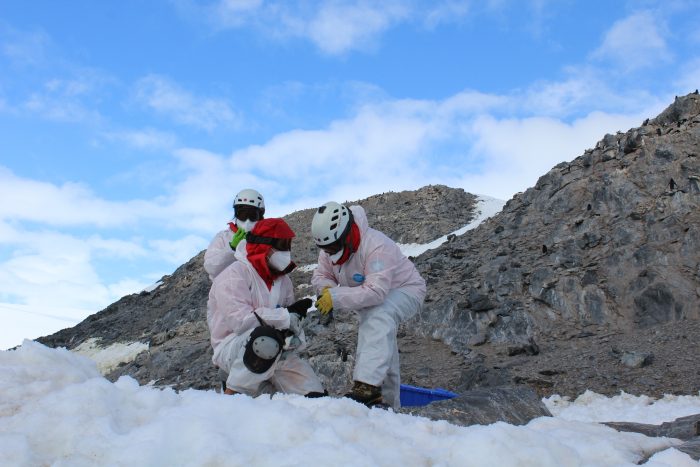The first strategic emergency project proposed in the context of avian influenza successfully arrived in Antarctica with the aim of conducting critical research on the disease in the region. The main goal of this collaborative effort, led by virology and avian experts, is to understand the presence and evolution of avian influenza on Earth’s most remote continent.
Their work includes collecting comprehensive data on the presence of avian influenza strains in migratory birds and other local animals, as well as assessing possible transmission to humans. Given the unique conditions of Antarctica, understanding the dynamics of zoonotic diseases in the region is imperative.

Head of the Scientific Department of the Chilean Antarctic Institute (INACH), Dr. Marcelo Gonzalez Aravena It was explained that since the first reports of avian influenza in Chile and the province of Magellan last year, a prevention protocol has been implemented and is currently implemented by all national operators. In addition, the National Antarctic Science Program (PROCIEN) has established a team of experts responsible for planning field operations this season.
“These measures include behavioral monitoring of wildlife and confirmation of results through real-time PCR at the INACH Escudero site on King George Island. Virologists play a key role in this process Dr. Victor Nella and Dr. Gonzalo Barriga from the University of Chile for their field experience in Antarctic avian virus research,” González commented.
As Director of the Millennium Biodiversity Institute for Antarctic and Subantarctic Ecosystems (also known as the Millennium BASE Institute), Dr. Eli Pullin, Emphasizing that collaborative work will help to obtain more scientific evidence after the first case of avian influenza was confirmed in the White Continent: “Antarctica is a unique and sensitive ecosystem, and having an excellent research team will not only allow us to understand the final There is a need to not only understand the situation with avian influenza in the region, but also to assess how environmental changes affect the spread of the disease. So being able to take samples and collect data in the field is critical,” he noted.
The Strategic Avian Influenza Emergency Expedition will seek to study and conduct active surveillance of H5N1 viruses in birds and marine mammals, led by Dr. Lucas Krueger, INACH researchers and the Milenio BASE Institute, as well as researchers assigned to the Milenio BASE Institute Dr. Gonzalo Barriga, Virologist and academic at the School of Medicine of the University of Chile, and Claudia Ulloa, Veterinarian and researcher at UC Molecular Biodiversity Laboratory Dr. Juliana Vianna.
although Beatrice EsnardPhD researcher at the University of California and the Milenio Base Research Institute, joining the LX Antarctic Scientific Expedition (ECA 60) Barbara Belazere Ponte, Master student in Animal and Veterinary Sciences at the University of Chile and thesis student at the University of Chile Dr. Victor NellaThe agency has been studying influenza for more than a decade together with the Laboratory of Animal Virology of the School of Veterinary and Animal Science of the University of Chile. Benjamin Bennett Russo, Veterinarians and research assistants from the same laboratory will also provide on-site support to the team, which will remain on King George Island until the end of January.

In October 2023, a team of scientists from the British Antarctic Survey (BAS) confirmed an outbreak of highly pathogenic avian influenza among a population of brown skuas on Bird Island (South Georgia). Meanwhile, on the other side of the Antarctic continent in Alaska, the first case of highly lethal avian influenza was discovered in a polar bear in the town of Utqiagvik.
During Antarctica’s polar summer, the scientific team will focus on collecting field samples to provide information about the behavior of viruses in extreme environments and their eventual spread among animal species.

